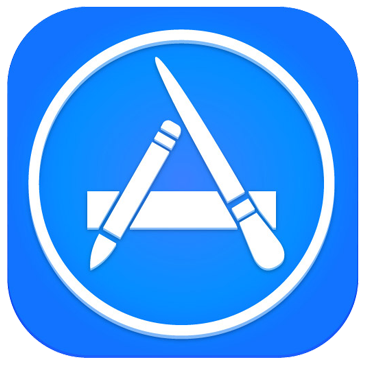This is the best way to experience Off Camera- When you get the app, you can instantly subscribe to Off Camera, or buy single issues a la carte. The Off Camera app is a beautifully designed hybrid magazine with the entire television version of Off Camera contained within it, available for any tablet or mobile device.
This e-magazine has all the images and extra content available in the physical version of the Off Camera magazine, plus enhanced HD video streaming so you can enjoy Off Camera your way.
After downloading the app, you will find Off Camera in your Apple newsstand folder. You can play steaming HD video straight from the pages of the app, making this experience truly multi-media.
Off Camera subscriptions available:
Single Issue/episode: (non-subscription): $2.99
6 month subscription: (11 issues/episodes): $27.99
1 year subscription: (22 issues/episodes): $49.99
Available in the Apple App Store and on Amazon:
Not much in Chadwick Boseman’s early life would lead you to think he would become an actor. Not his birthplace (Anderson, South Carolina), not his family (his mom was a nurse, his dad an upholstery business owner), not his interests (he was the quiet one who played sports). Not one thing, it seems, except he just decided.
A sad incident in his last years of high school prompted him to write and then direct his first play, after which he simply decided that’s what he’d do. He studied at Howard University and later at the British American Drama Academy in Oxford, and in short order, commenced writing plays: His 2006 Deep Azure was nominated for a 2006 Joseph Jefferson Award for New Work, and the Chicago Tribune called it “Fascinating…Especially because the 28-year-old Boseman is a fresh talent – a young, sophisticated African-American writer with all of the flaws that flow from youth and inexperience and all of the excitement that draws from those very same places. With a slate of cultural references complex enough to encompass the likes of jazz-speak, Shakespeare, Hebrew, Louis Farrakhan and Spider-Man, Boseman offers a creative, slick and arresting employment of theatrical language and imagery.”
But Boseman had also taken some taking acting classes in college. At the time, it was just to learn how to work with actors, but in 2008 he decided he was ready to become one himself. He got a few TV parts here and there (L&O, Lincoln Heights, Persons Unknown), but film parts – many of which he was sure he’d get – eluded him. One of those was in Django Unchained. Boseman wasn’t cast, but after his audition, director Quentin Tarantino told his casting director, “That guy is going to be something.” But what? Those were lean years, and Boseman was on the verge of re-committing to the stage. That’s when he got the call to read for 42, playing Jackie Robinson opposite Harrison Ford. Director Brian Helgeland tells a story of his audition: “[Boseman] came in and said, ‘You’re either going to like me or not, and we’re going to know in five minutes.’ He had to play one of the bravest men who ever lived, so I thought that he came in brave was a great indication.”
It was brave, considering Robinson himself had played the role in 1950’s The Jackie Robinson Story. Most reviewers felt Boseman did the better job. His bravery was put to the test again when he was asked to audition for the role of James Brown in 2014’s Get On Up. Boseman hesitated (the moves alone would’ve scared even more flexible men), but director Tate Taylor knew it was about more than the Mashed Potato. He needed to see Boseman play Brown in his 60s. “That was the Achilles heel of the whole project,” Taylor told The Guardian in 2015. “I thought, if this isn’t perfect, we will fail, and the whole tone will be wrecked. I need the best fucking actor I can find… and he nailed it.’” Variety agreed, calling his performance faultless. “Chadwick Boseman plays Brown from age 16 to 60 with a dexterity and invention worthy of his subject. We have a chance to see this remarkable actor in full bloom, whether he’s giving life to Brown’s signature dance moves…or burrowing deep into the performer’s tortured, little-boy-lost soul. He feels Brown from the inside out, the way Brown felt his own distinctive rhythms, and even when the movie itself seems to be on autopilot, Boseman never leaves the captain’s chair.”
Suddenly, Boseman seemed the go-to guy for movies about iconic black figures. It’s something he initially resisted, but this month finds him in Marshall, a biographical thriller about the first African-American Supreme Court Justice Thurgood Marshall and one of the first cases in his career. Boseman is obviously in possession of a strong will, but like most real artists, he’s powerless when it comes to a great story.
His most iconic character yet may actually be fictional. Last year he joined Marvel’s blockbuster Captain America: Civil War as T’Challa/Black Panther, a brilliant scientist and king of the unconquerable African nation of Wakanda, not to mention a shrewd tactician and fighter. As the first in a five-picture deal with Marvel, it’s of no small significance to Boseman’s career. So is the fact that he’ll be the first black superhero starring in his own Marvel film when Black Panther premieres in 2018. NPR said his “regal performance” in Captain America “makes you wish it were arriving sooner.” If “you” means the 90 million people who watched the film’s teaser trailer within four hours of its release, that sounds about right.
But back to that decision to write and direct. Boseman has said he’s learned you have to choose a clear point of entry to the business, but once you define yourself, you can go into other arenas. That’s good, because we need artists like him pushing from behind the camera as well. However he decides to tell his stories, we’re listening.




